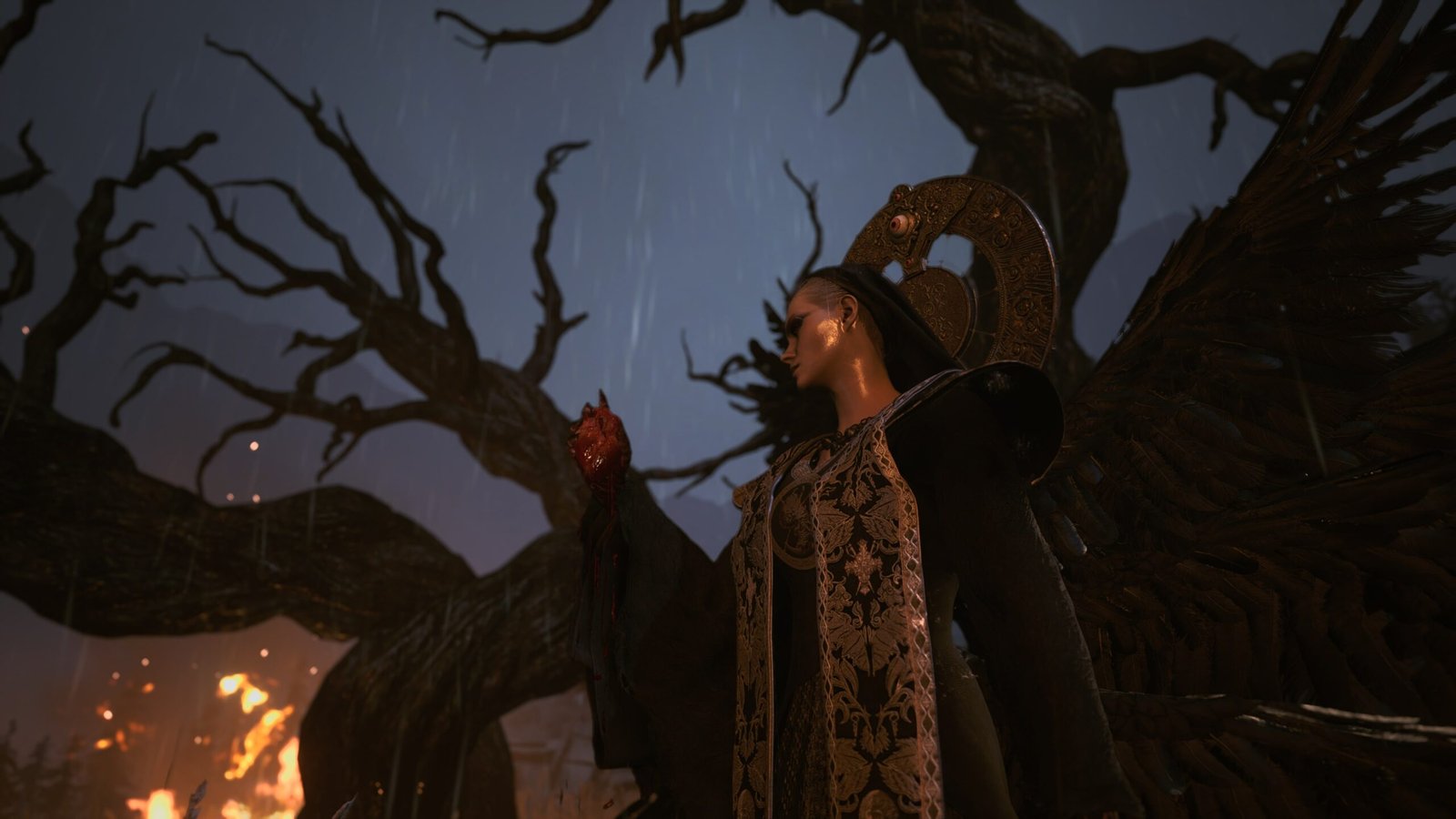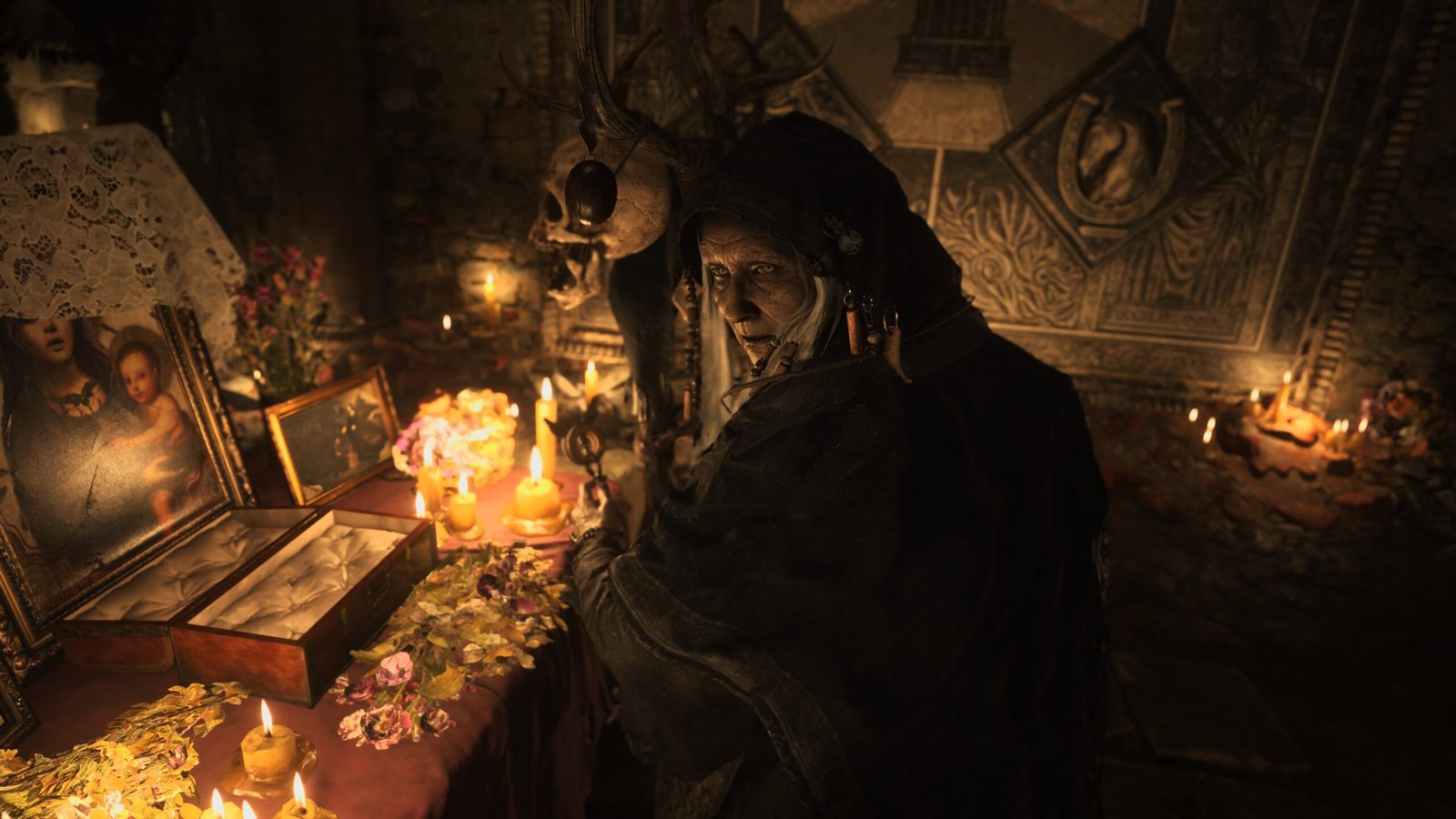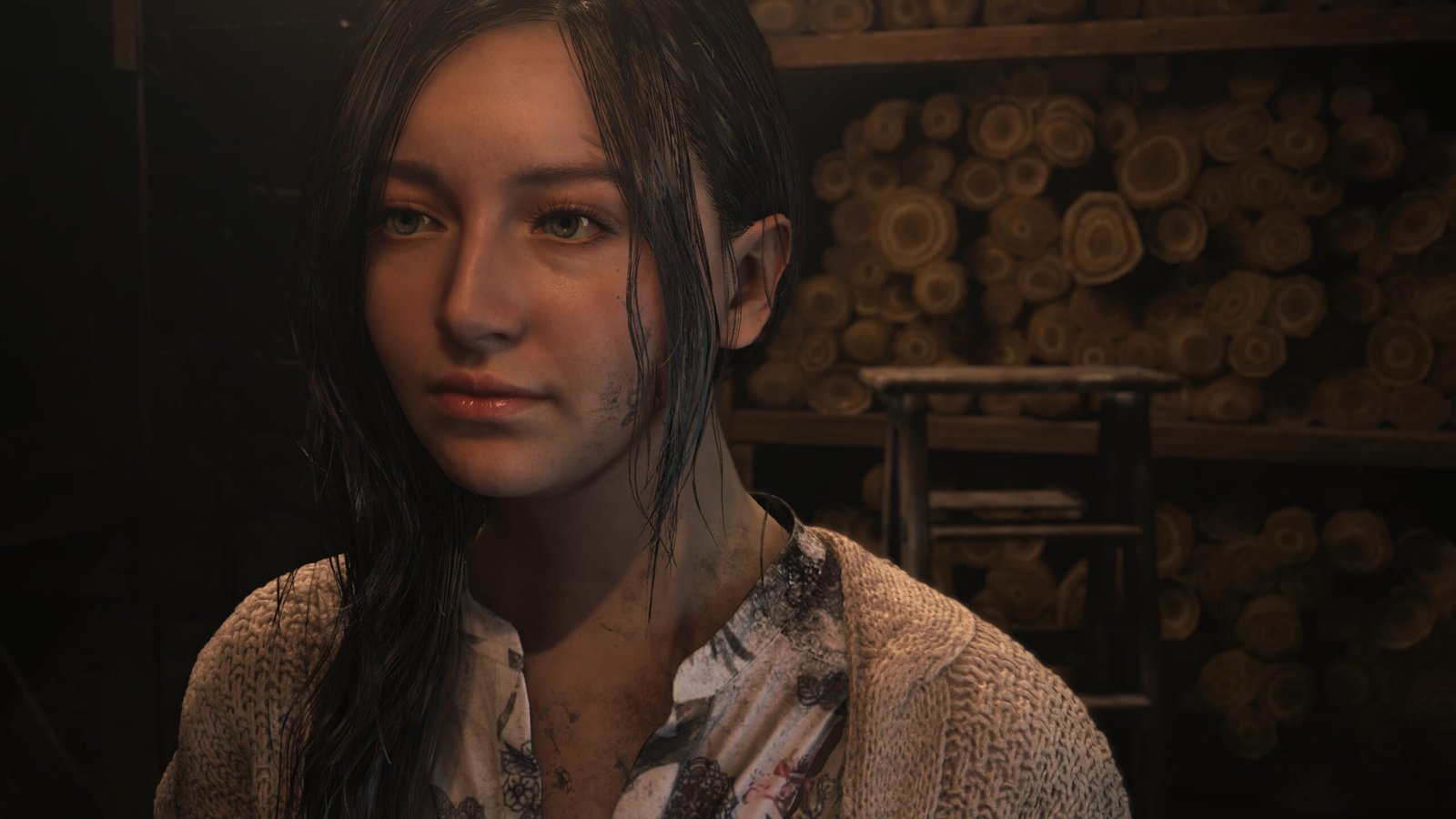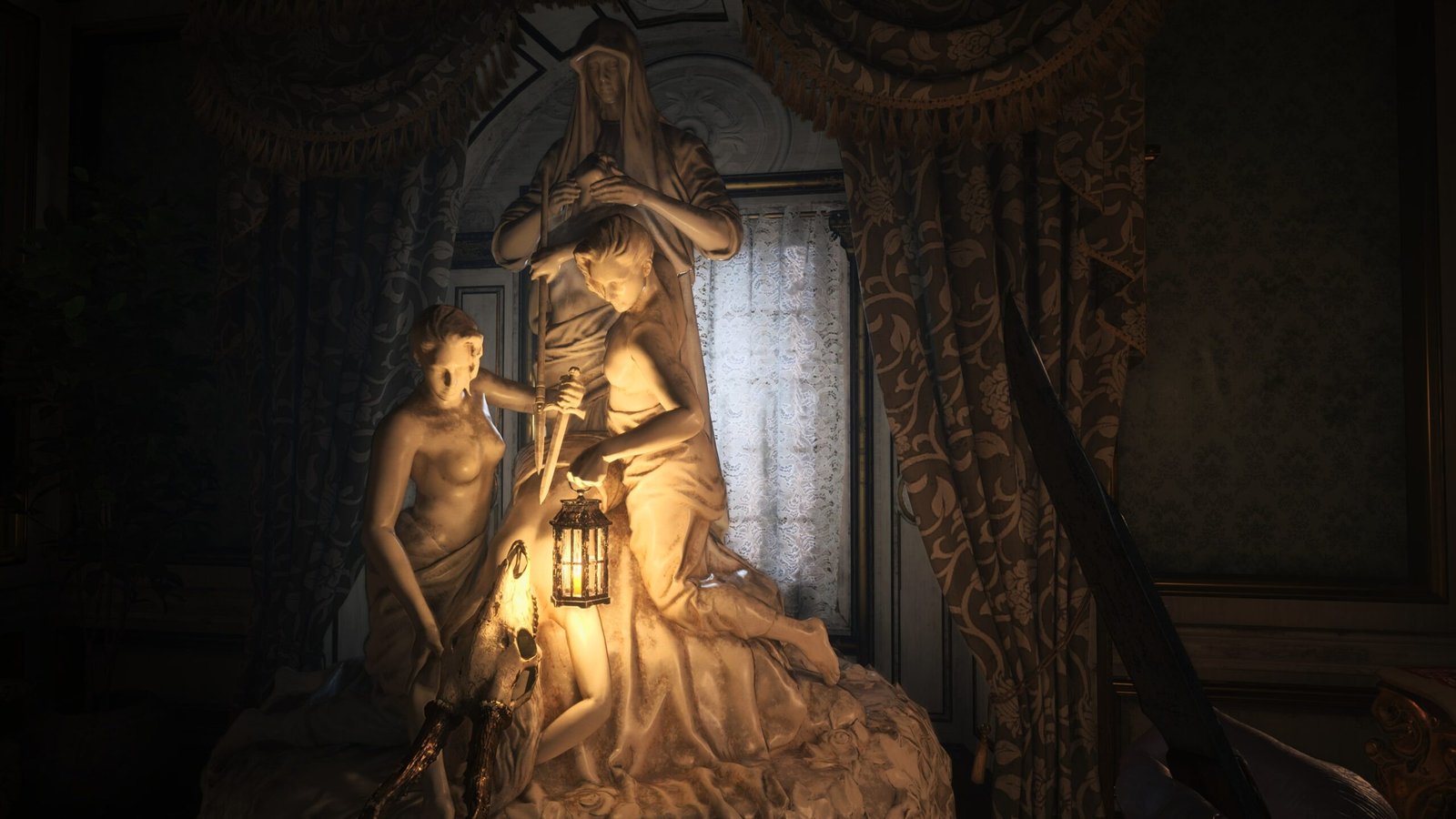(Reviewed on Xbox Series X by Games of DAYNE)
The horrific survival adventure of Ethan Winters continues in Resident Evil: Village. Having survived the events of Resident Evil VII: Biohazard to rescue his wife Mia, Ethan now finds himself trapped in a village full of mutant werewolves and vampires in search of his six month old daughter Rose.
The village itself is a character in its own right that is fleshed out at the players pace as they push forward through the horror and madness that Capcom has unleashed in this eighth numbered instalment of the wildly popular franchise.
Biohazard was the tale of a husband and Village appropriately is the story of a father. Having survived the events that took place in Louisiana in Biohazard, Ethan and Mia now reside in a haven free from torment with the exception of the emotional and mental struggles they desperately want to forget. An unexpected visit from franchise favourite Chris Redfield sets things in motion and take the story to the snowy Transylvanian village that is home to an even more sinister league of tyrants that each serve as Lord over a distinct area.

Led by the mysterious Mother Miranda, Village poster girl Lady Dimitrescu, a towering nine and a half foot tall vampire, is the first of the four Lords to terrorise Ethan alongside her three vampiric daughters at Castle Dimitrescu. Rather than being supernatural entities, in typical Resident Evil fashion the vampirism is given its roots as a scientific anomaly, a bi-product of interaction with the Megamycete which served as the catalyst for the creation of the Mold from Biohazard.
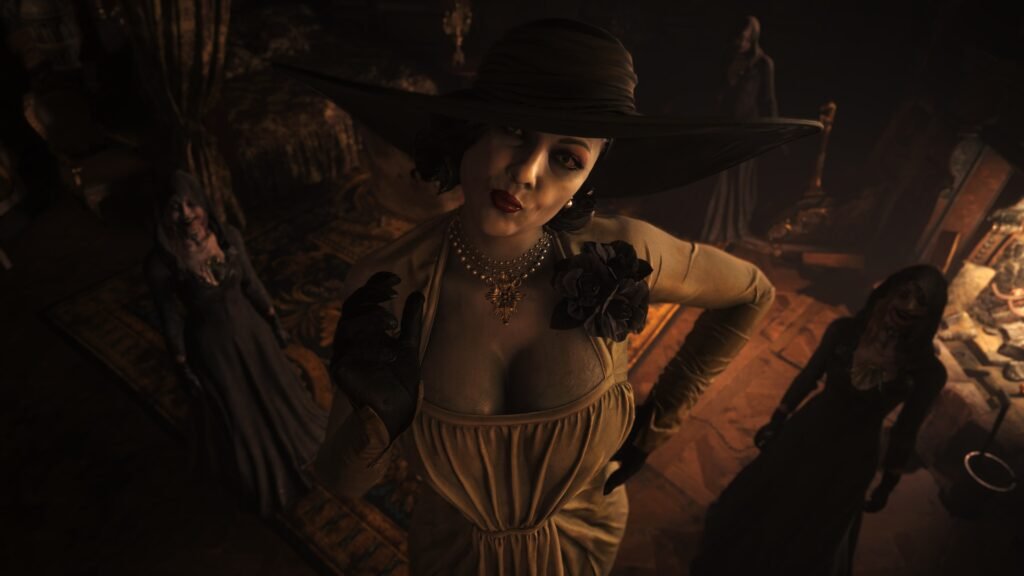
Mutated merman Salvatore Moreau, Donna Beneviento and her “living” puppet Angie and egotistical Karl Heisenburg round out the Lords of the village, each full of personality and revealable lore that can be found, digging deeper into the origins of their mutations and allegiance to Mother Miranda.
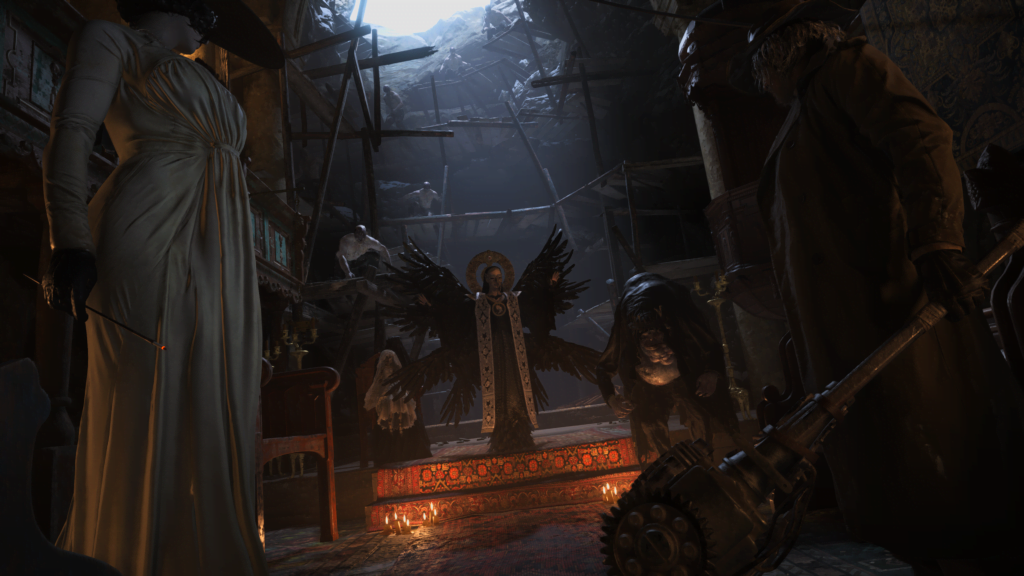
Inevitably Ethan squares off against each of the Lords and the ensuing boss battles typically have a strategic element to find their exposed weak spot and exploit it. For some reason these decrease in difficulty with story progression and become more about spraying them with bullets instead of strategy, a theme that plagues the second half of the experience significantly.
From having to elude the stalking Lady Dimitrescu, manipulating platforms to maroon Moreau and the heavy puzzle elements from Beneviento, the final two boss battles are won with bullets rather than strategy, undermining the excellent execution of the earlier battles.

The regions these characters Lord over are all connected by a central hub area of the village, with certain areas unlockable only with story progression and access to specific keys. With the exception of Heisenberg’s barren factory wasteland, the rest of the village is covered in snow. Despite this, each region feels distinctly different and characterised in its own ways including by the types of enemies that populate them.
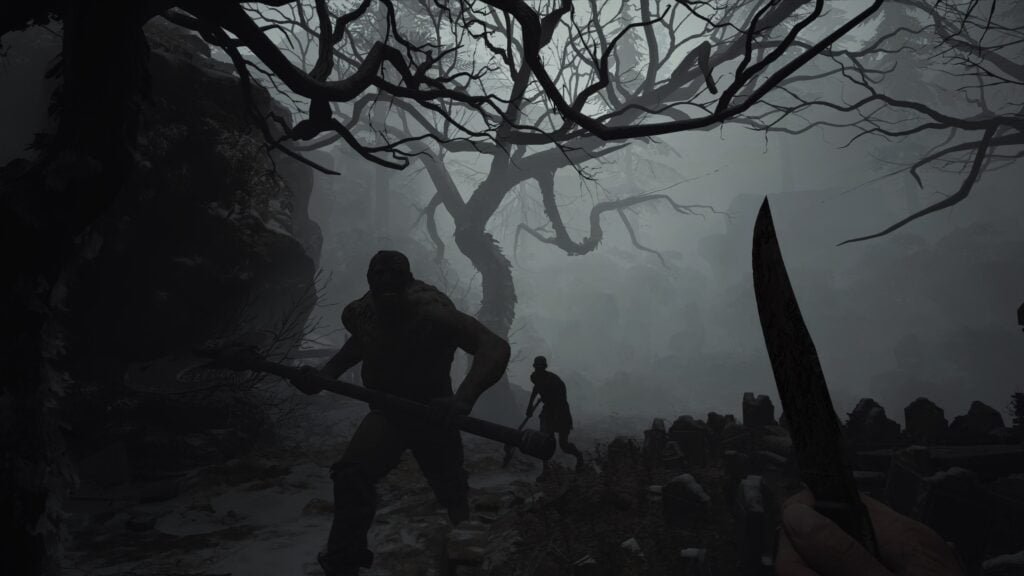
Various forms of werewolves dominate the enemy roster, referred to as Lycans the most common iterations resemble man more so than wolf but fully realised werewolves terrorise the player with progression.
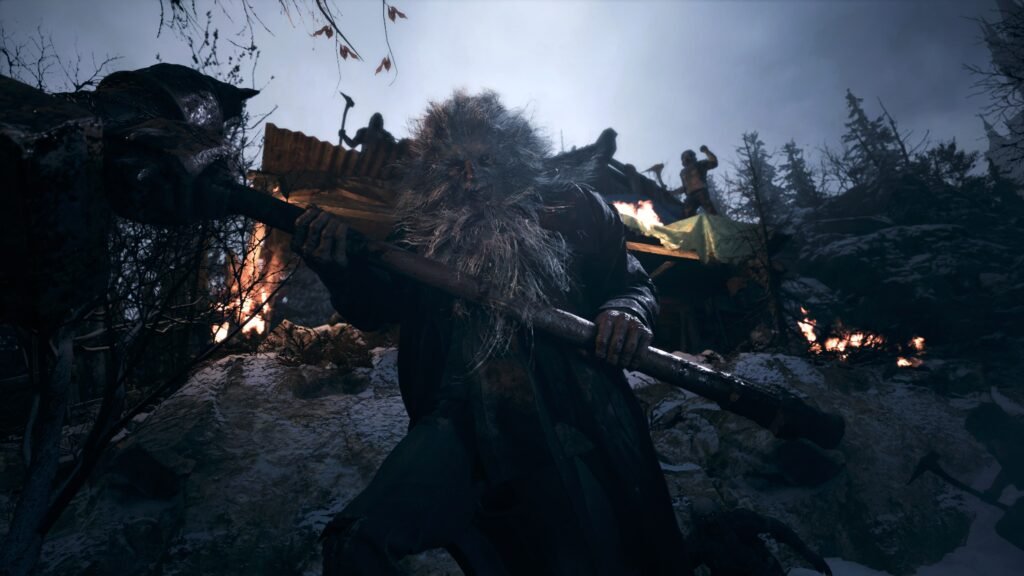
Initially my thoughts of the werewolves was that they were a little off though with their origins revealed through readable files scattered throughout the village, the scientific reasoning for their existence and therefore appearance made sense within the confines of the Resident Evil mythos. The inclusion of gargoyles and axe wielding giants are just a few of the larger than life enemy variants that will stop at nothing to put Ethan down.
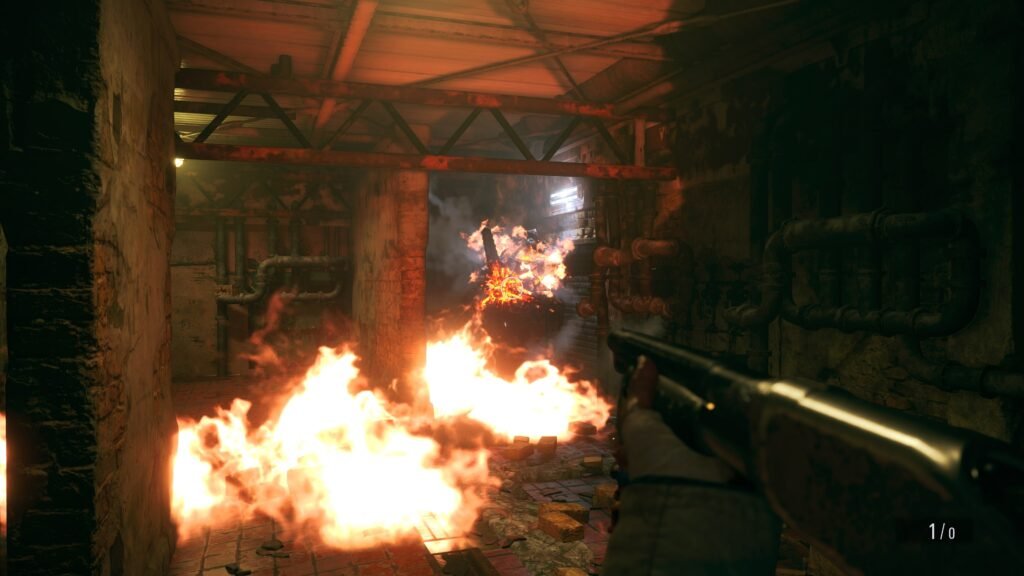
While the franchise has favoured a linear approach to storytelling Village is instead more open, affording the player opportunity to explore and survived hidden secrets and areas without being forced in a singular direction. While the story itself is guided in a particular direction the freedom to explore is welcome, especially considering how visually stunning the environment is in regards to detail. It’s beautiful, haunting and ominous, the snow almost serving as a metaphor for the secrets buried beneath the surface of the village.
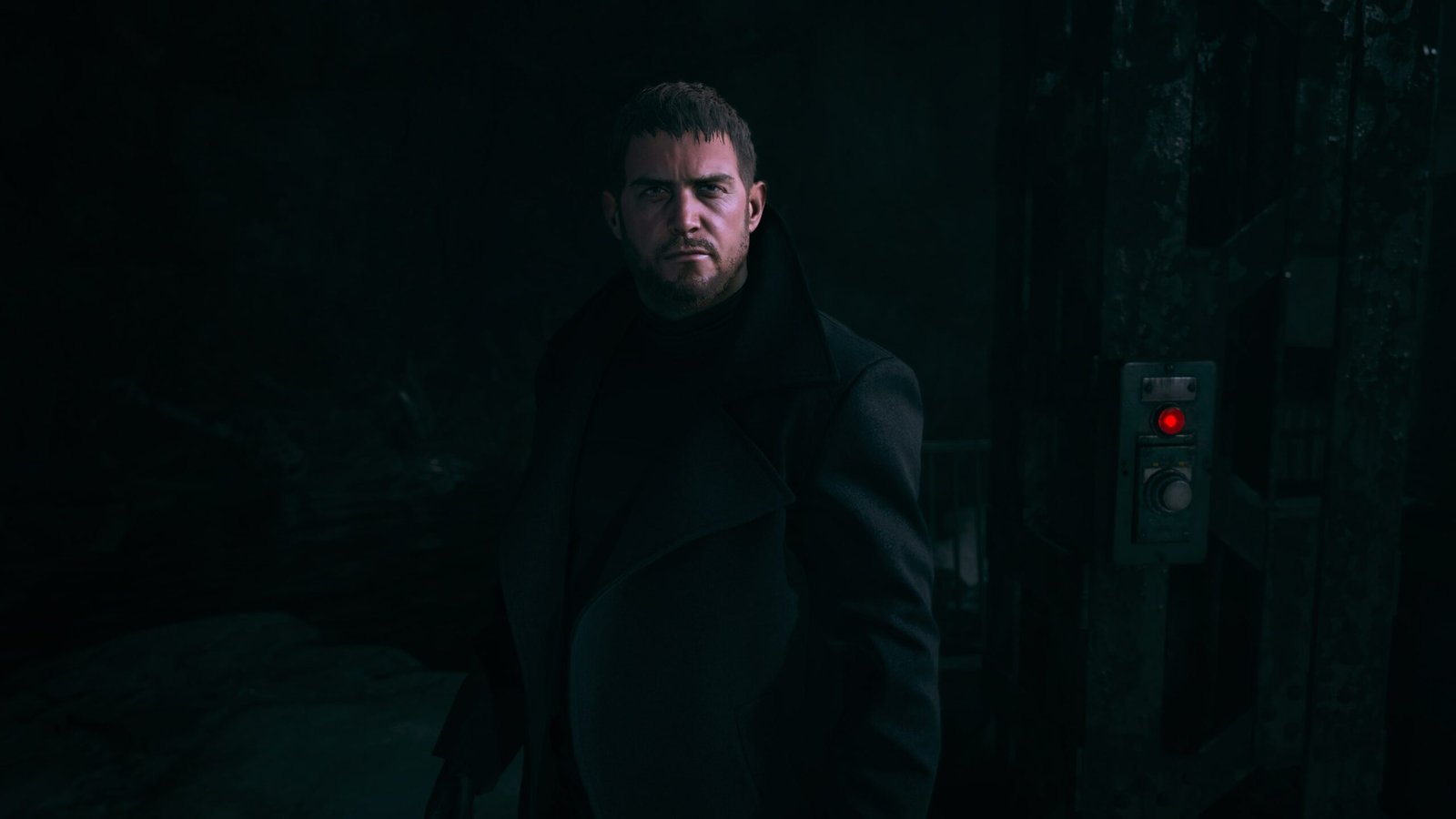
At various locations throughout the village a merchant by the name of Duke has set up shop, offering the likes of healing items, ammo, lockpicks, crafting recipes and weapon upgrades in exchange for Lei, the in-game currency found or picked up from defeated enemies.

Later on the ability to create food recipes that offer permanent boosts to Ethan become available, requiring various ingredients to be found and hunted from the wildlife that populate the village. Duke is more than a merchant and plays his own part in the broader narrative which is an admirable way to give meaning and purpose to every character in the game.
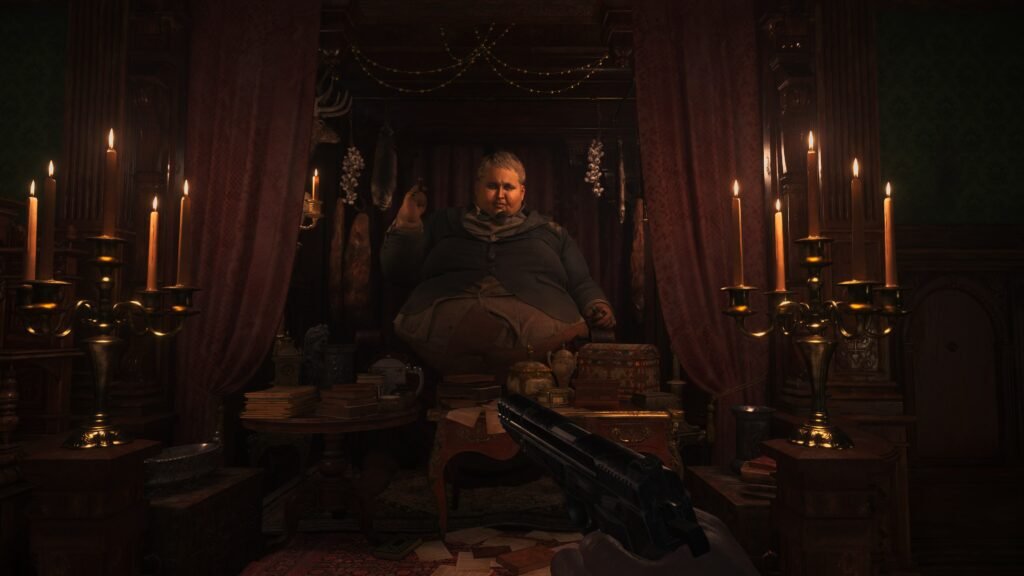
Puzzles are a staple of the franchise and this time around they are all surprisingly simple and require little more than a bit of backtracking once new items are obtained. In at least one instance the solution is literally right beside the puzzle. Diehard fans may be disappointed by the lack of complexity but casual players will certainly appreciate the relaxed approach, not being held back from pushing the story forward by mindless wandering and head scratching distractions.
Stealth is important early on in Village until an arsenal of weapons is comfortably established. Some weapons are found within the environment while others are all but unmissable in the linear narrative path. Most weapons have attachments that can be found, equipped and upgraded. Unrelated to how many weapons are in your possession, due in part to the limited inventory system and no storage box system as per previous entries in the series, the game shifts its focus towards action and the back half of the game is essentially a shooter. This is comparable to the significant shift towards action at the end of Biohazard where enemy numbers are increased but so too are ammo drops.
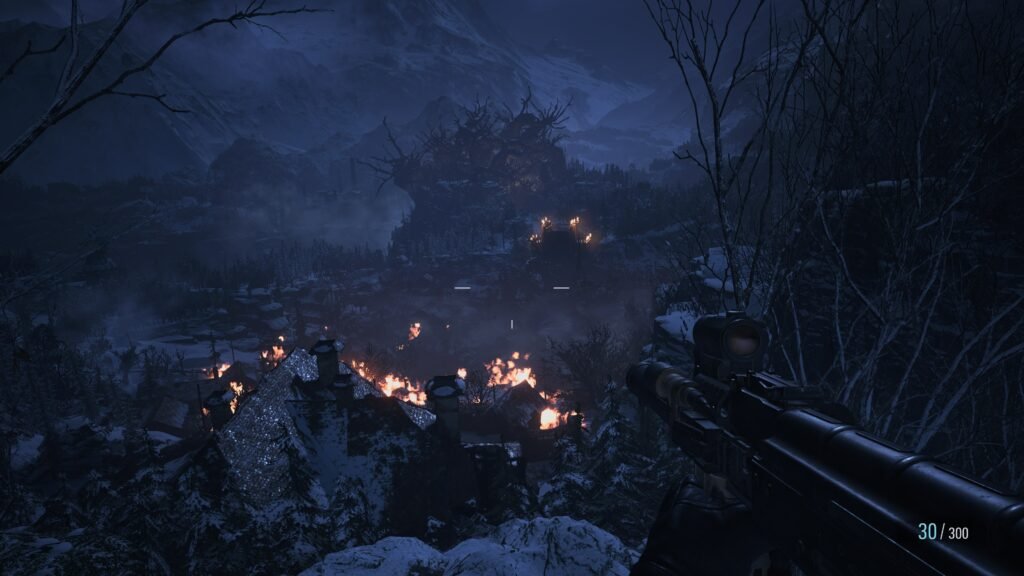
This is disappointing as Village overall lacks in scares and a sense of dread anyway, couple that with its later transition to action and the atmospheric tension is all but non-existent. That’s not to say the village itself doesn’t have an incredible atmosphere.
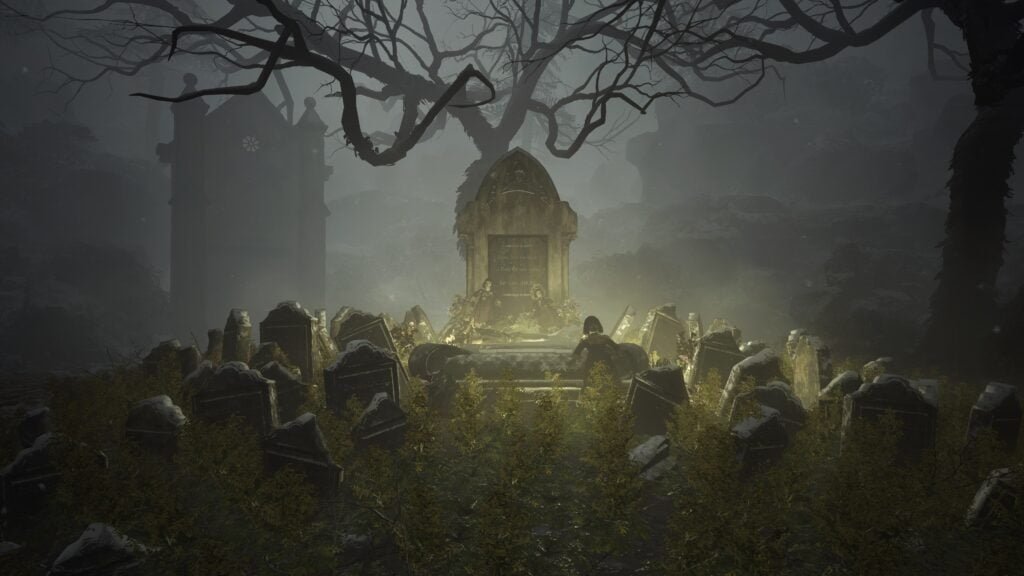
It looks unsettling but the horrors within are more out in the open than ever before, with the tension relegated to an environmental and atmospheric aspect rather than the actual terror of unexpected jump scares or horrific moments.
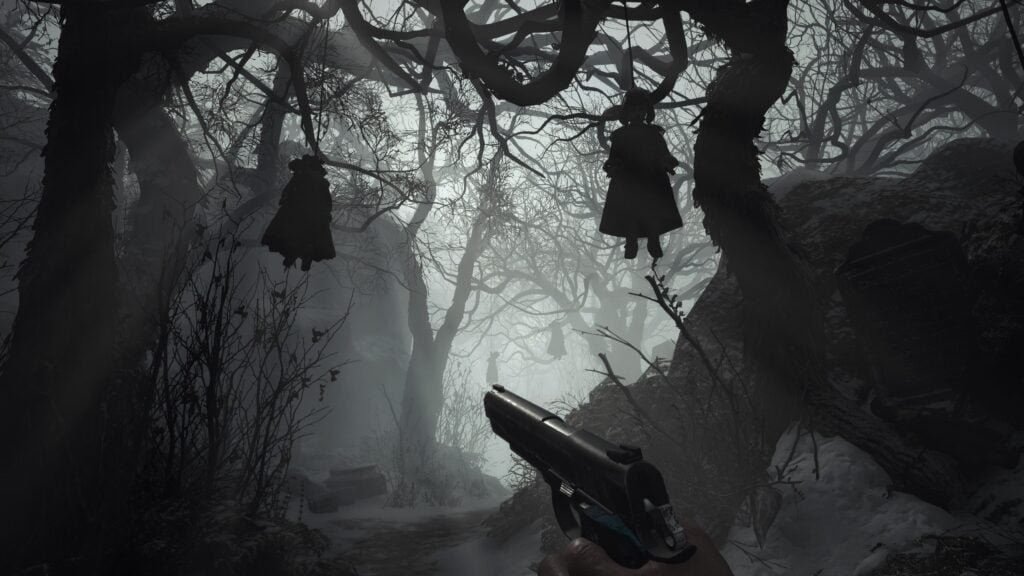
Resident Evil: Village is less horror than franchise players would expect and while it doesn’t make the game any less great, it holds it back from reaching a height the series is known to deliver.
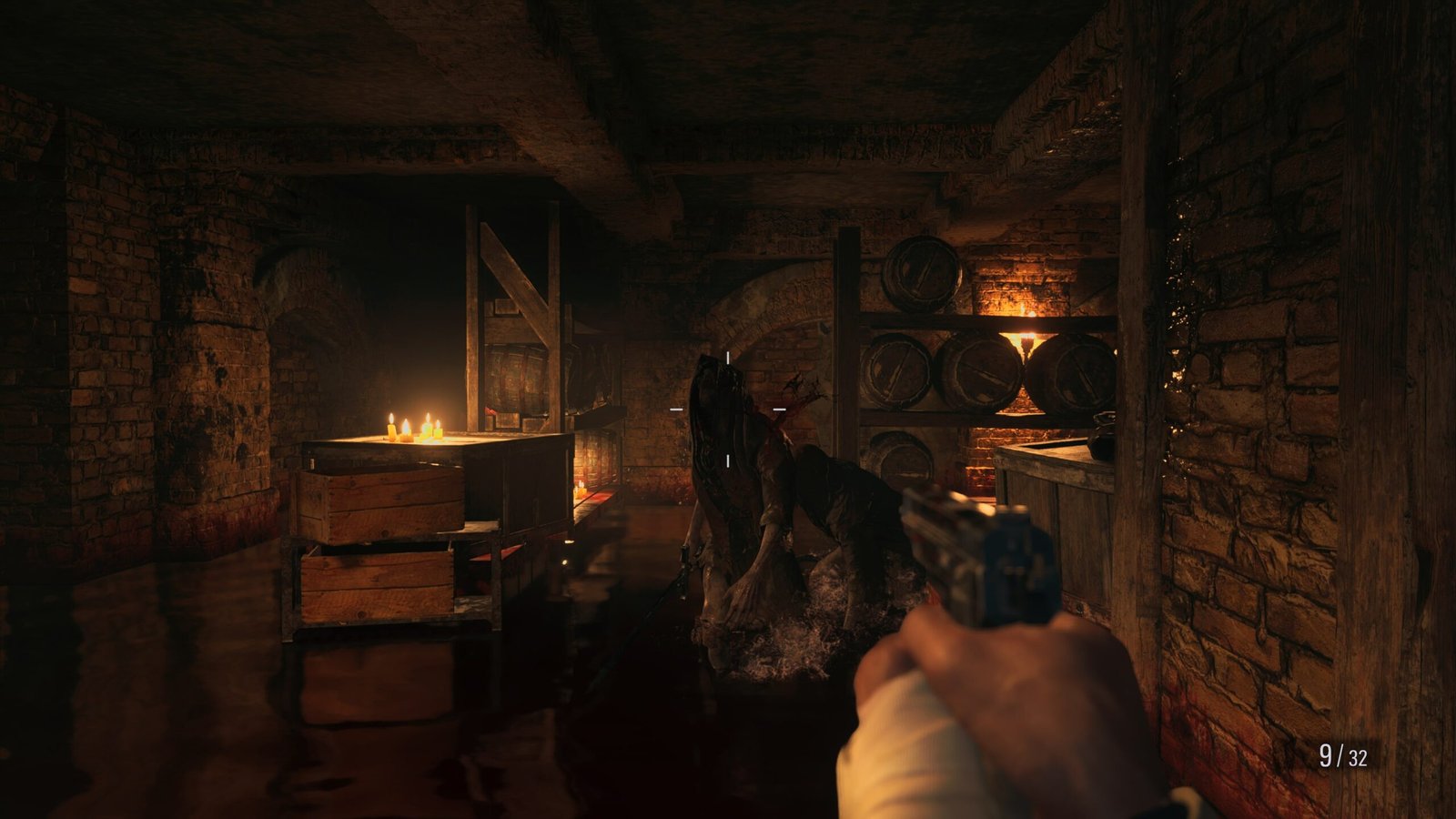
![]() New Game + becomes available upon completion of the story, as does a new difficulty and an assortment of weapons and alternative reward systems that encourage replayability. The recurring CP currency returns in Village and awards CP points for completing challenges which can be spent on new bonus items and weapons to make future experiences more exciting and diverse. Challenges can be seen by hitting pause and selecting the Challenges button and include ones for combat, story, Achievements/Trophies and other miscellaneous criteria.
New Game + becomes available upon completion of the story, as does a new difficulty and an assortment of weapons and alternative reward systems that encourage replayability. The recurring CP currency returns in Village and awards CP points for completing challenges which can be spent on new bonus items and weapons to make future experiences more exciting and diverse. Challenges can be seen by hitting pause and selecting the Challenges button and include ones for combat, story, Achievements/Trophies and other miscellaneous criteria.
The Mercenaries mode is also only accessible after completing the story on any difficulty. This mode pits players in time trial combat situations across 8 stages and awards a rank and CP based on performance. Killing as many enemies as quickly as possible while maintaining a combo. Special ability orbs can be picked up and stacked, increasing their effectiveness. There doesn’t appear to be a limit to how many can be equipped which is fun to experiment with and become the ultimate bioweapon so to speak. Mercenaries doesn’t necessarily add much to the overall experience of Village but is a welcome addition nonetheless if for no reason other than to extend the time spent in the beautiful locales of the main story.
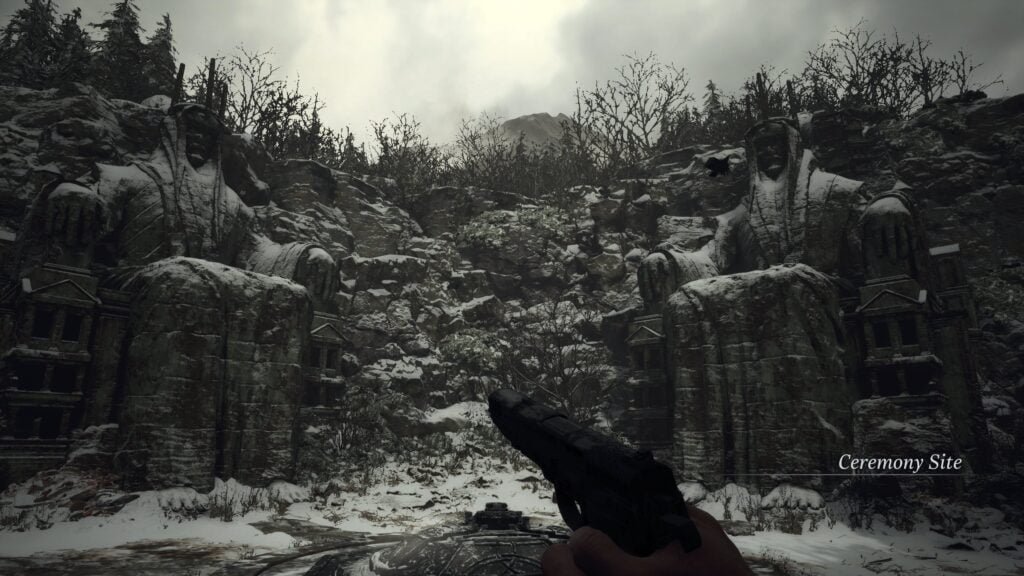
Resident Evil: Village is a visual marvel, a strikingly beautiful landscape becomes a hellish playground in the theme park of horrors style world. The environmental detail is incredible, truly shaping the village as a character in and of itself. The diverse locations that Ethan must explore keeps things fresh, offering caves, castles, underground bunkers and creepy houses to name just a few. An eerily haunting score and crisp sound design raise the atmospheric tension, keeping the experience feeling grand, solemn and mysterious accordingly.

Spending just under 8 hours on my initial playthrough I was relatively thorough with my exploration and uncovered all of the hidden files yet Resident Evil: Village still feels as though it has so much more to offer. The map shows each room of every area as blue when it has been completely explored and all secrets uncovered while red suggests there is still something hiding away, waiting to be discovered.
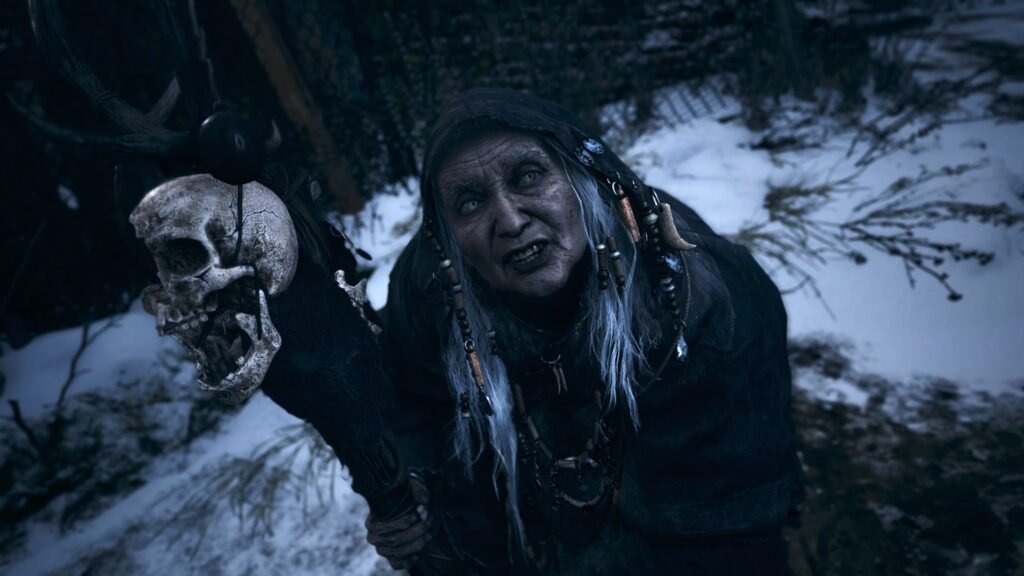
The story hits the mark for the most part, remaining intriguing throughout and while Ethan himself feels uninteresting at times his purpose and significance are revealed before the credits roll in a way that add depth in retrospect, adding a level of appreciation for the moments he failed to feel meaningful. Taking a break from the tiring zombie theme was refreshing and well executed in the gothic horror tropes and style adopted for Village. What it lacks in scares and challenge it more than makes up for in its visual beauty, intriguing narrative and ever-evolving franchise lore.
+ Incredibly stunning visuals
+ Striking score and sound design
+ Characterisation of the village itself
+ The Resident Evil logic behind werewolves and vampires
+ Fun gameplay
– Too action oriented
– Lacks in scares and tension the franchise is known for
– Boss fights gradually decline in quality
– Ethan doesn’t feel important until too late

Developed by: Capcom
Published by: Capcom
Release Date: May 7 2021
Platforms: Xbox One/Series X/S, PlayStation 4/5 and PC
* A digital code was provided by the Publisher for the purpose of this review *
– Additional Links –
For more of my reviews, click HERE.
To see this review and other multi-platform content from my associates at BG4G, click HERE.
Don’t forget to also follow Games of DAYNE on: Twitter, Facebook and YouTube!
All digital photography was captured in-game on Xbox Series X by Games of DAYNE.



